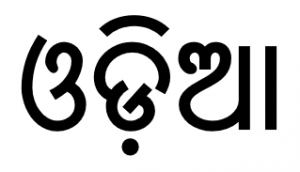Language/Odia/Culture/Traditional-Celebrations
| ◀️ Major Festivals — Previous Lesson | Next Lesson — Traditional Art Forms ▶️ |
Overview
In this lesson, you will learn about traditional Odia celebrations and their cultural importance. Odisha is famous for its rich cultural heritage, and festivals and celebrations play a significant role in showcasing this heritage. Odia festivals bring people from various communities and religions together and help maintain social harmony.
Festivals and Celebrations
Rath Yatra
Rath Yatra is one of the most famous festivals celebrated in Odisha. It is a chariot festival of Lord Jagannath, his sister Subhadra, and brother Balabhadra. The Jagannath temple in Puri is the main center of celebration. Three huge wooden chariots are built every year, and the deities are pulled in a grand procession by thousands of devotees. The festival falls in June or July every year.
Durga Puja
Durga Puja is a significant festival celebrated in Odisha. It is worshiped as the goddess of power, and the festival signifies the victory of good over evil. The festival begins on the sixth day of Navaratri and lasts for ten days. People perform various rituals and offer prayers to goddess Durga. Beautifully decorated pandals can be found in every nook and corner of the city.
Raja Parba
Raja Parba is a three-day-long festival celebrated in the month of June. The festival is mainly celebrated by women and is associated with agriculture. During this time, the earth is believed to be in a menstruating state, and all agricultural activities are stopped. Women celebrate by wearing new clothes, playing traditional games, and making special dishes, such as poda pitha.
Makar Mela
Makar Mela is a well-known festival celebrated in Odisha in January. The festival marks the beginning of the harvest season and is celebrated with great enthusiasm. People take a holy dip in the river or ocean and offer prayers to the sun god. Various cultural programs are organized, and people indulge in delicious food.
Traditional Celebrations
Boita Bandana
Boita Bandana is a traditional celebration that takes place in Odisha on Kartika Purnima, which is the full moon day in November. It is also known as the festival of boats, where people float small boats made of cork or paper in rivers, ponds, or the sea. The ritual is conducted in the memory of the ancient maritime trade that used to take place from Odisha to Southeast Asia centuries ago.
Nuakhai Juhar
Nuakhai Juhar is the most important celebration of Western Odisha. It is a harvest festival and is celebrated on the day of Panchami in the month of Bhadraba. The festival brings families together to celebrate and share their new crops, especially the first grains of the season. People wear new clothes, perform special puja, and prepare a traditional dish called 'Nabannna' or new rice.
Gamha Purnima
Gamha Purnima is a religious festival celebrated in in August or September in Odisha. Cows are worshiped on this day, as they are considered sacred in Hindu mythology. People decorate their cows with colourful accessories, feed them special dishes, and thank them for their contribution to agriculture.
Rajo Festival
Rajo Festival takes place in June and is celebrated with great enthusiasm in rural areas. Women enjoy swings, eat traditional delicacies and wear new clothes. Girls apply alata, a type of red dye, on their feet and hands. It is believed to prevent diseases and bring good luck.
Conclusion
In this lesson, you learned about the traditional celebrations of Odisha. Festivals and celebrations play an important role in showcasing Odisha's rich culture and heritage, and they bring communities together. They are an essential part of the social and cultural fabric of the state that has been passed down from generations.
Other Lessons
Sources
| ◀️ Major Festivals — Previous Lesson | Next Lesson — Traditional Art Forms ▶️ |

